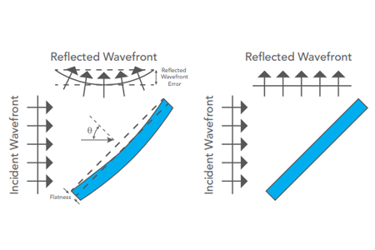What Is Practical Flatness?

In super-resolution microscopy (SRM) techniques such as structured illumination microscopy (SIM) and stimulated emission depletion (STED), dichroic beamsplitters' reflective properties play a crucial role. However, understanding how flatness specifications translate into real-world performance can be challenging. The flatness of dichroic beamsplitters affects optical wavefronts, influencing the focal position and spot size, ultimately impacting the quality of your images.
In this application note, we explore the theory and practical implications of dichroic flatness. From investigating the effects of curvature on wavefronts to deciphering the mathematical concept behind focal plane shifts and spot size alterations, our goal is to demystify these complexities and provide clarity for your super-resolution microscopy endeavors. Discover how BrightLine® laser dichroic beamsplitters are setting a new standard for clarity, precision, and performance, revolutionizing SRM.
Get unlimited access to:
Enter your credentials below to log in. Not yet a member of Photonics Online? Subscribe today.
